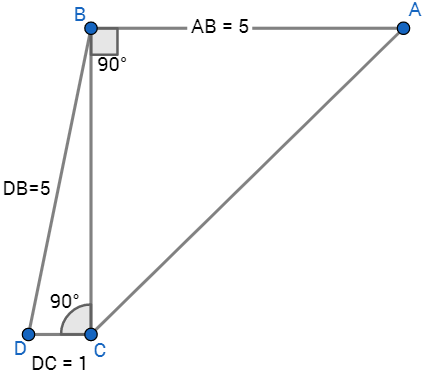1. Find the Slope
Finding the slope is relatively simple once you remember the formula. For me, I could not memorize any formulas unless I put them in words. I remember this formula as the ratio of the difference in y-values to x-values, if that helps. Anyway, here is the formula.
\(m=\frac{y_2-y_1}{x_2-x_1}\)
| \(m=\frac{y_2-y_1}{x_2-x_1}\) | Now, plug in the coordinates into their respective positions in the formula. |
| \(m=\frac{5+16}{4+3}\) | Simplify the value of the slope completely. |
| \(m=\frac{21}{7}=3\) | |
Now that the slope has been determined, one can move on to the next step.
2. Plug in a Coordinate for X and Y to Solve for B.
We now know the slope, so the equation of the line is now \(y=3x+b\). Based on the given info, we know that both Cartesian coordinates, (-3,-16) and (4,5) lie on this line. Substitute one point in its place for x and for y to findt he answer.
| \(y=3x+b\) | I will substitute the second point, \((\textcolor{red}{4},\textcolor{blue}{5})\) in the equation. It does not matter which point one chooses to substitute in. |
| \(\textcolor{blue}{5}=3*\textcolor{red}{4}+b\) | Notice how the substitution replaces the coordinate. Now, solve for b. |
| \(5=12+b\) | Subtract 12 from both sides to isolate b. |
| \(b=-7\) | |
3. Write the Final Equation
Now that the only two necessary items, m and b, have been solved for, write the equation in y=mx+b format.
m=3
b=-7
\(y=3x-7\)
You are done now!

This image will make it easier to name individual segments, which should make the explanation more comprehensible.
Using the Pythagorean's theorem, one can solve for BC.
| \(BC^2+CD^2=BD^2\) | This is what the Pythagorean theorem states. Substitute in the known values and solve for the unknown. |
| \(BC^2+1^2=5^2\) | Now, simplify the left and right sides of the equation. |
| \(BC^2+1=25\) | Subtract 1 from both sides of the equation. |
| \(BC^2=24\) | Take the square root of both sides to eliminate the index of 2. |
| \(BC=\sqrt{24}\) | Of course, there is no reason to consider the negative answer because distances can only be positive. There is no need to put this in simplest radical form because it is easier to work with computationally if it is in its current form. |
Knowing this information, one can then solve for the missing side, AC in the diagram.
| \(AB^2+BC^2=AC^2\) | \(\triangle ABC\) is indeed a right triangle, so we can use the special relationship of the sides indicated byt he Pythagorean Theorem again. |
| \(5^2+\left({\sqrt{24}}\right)^2=AC^2\) | Simplify the left hand side first before proceeding. |
| \(25+24=AC^2\) | |
| \(49=AC^2\) | Take the square root of both sides just like the previous problem. |
| \(AC=7\) | As aforementioned, the negative answer does not make sense in the context of geometry. |
Now that the hypotenuse of \(\triangle ABC\) has been solved for, you are done.